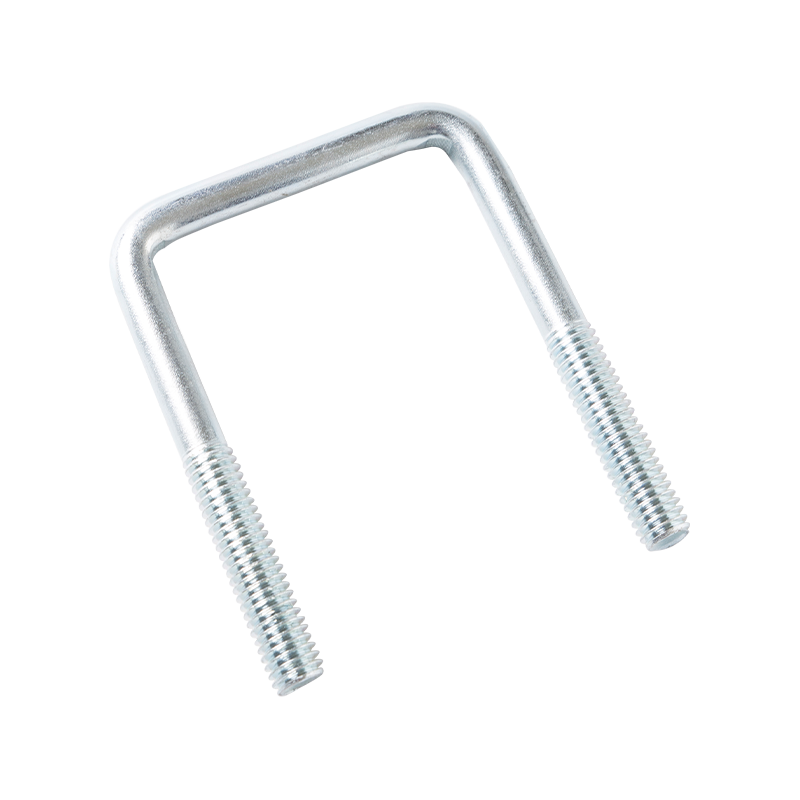How a U bolt's thread size and pitch affect its performance
How a U-bolt’s thread size and pitch affect its performance
As an important component in mechanical connections, the thread size and pitch of U bolt have an important impact on their performance. Proper selection of thread size and pitch not only improves the load-bearing capacity of the bolt, but also enhances its resistance to loosening. This article will delve into the impact of U-bolt thread size and pitch on performance to help readers better understand and select suitable bolt specifications.
Effect of thread size on bolt performance
Thread size refers to the diameter and pitch of the bolt thread. The selection of diameter and pitch is directly related to the load-bearing capacity and use range of the bolt. Generally speaking, the larger the thread diameter of a bolt, the higher its load-bearing capacity. The thread pitch affects the bolt's torque and assembly speed. For example, bolts with a diameter of M8 have a greater load-bearing capacity than M6 bolts, and are suitable for occasions with higher load-bearing requirements, such as the fixation of mechanical equipment. In addition, a smaller thread pitch can increase the torque of the bolt, making it more difficult to loosen, which is suitable for occasions with higher loosening requirements.


Effect of pitch on bolt performance
Thread pitch refers to the distance between two adjacent threads, which has an important impact on the torque and loosening performance of the bolt. Generally speaking, the smaller the pitch, the greater the torque of the bolt, thereby improving the bolt's ability to resist loosening. This is very important for equipment that needs to remain fixed for a long time, such as parts of high-speed rotating machinery. In addition, the smaller thread pitch can also increase the assembly speed of the bolt, reducing assembly time and cost.
The Importance of Correct Selection of Thread Size and Pitch
Proper selection of bolt thread size and pitch is critical to ensuring safe operation of equipment and extending the service life of components. In practical applications, appropriate bolt specifications need to be selected according to specific engineering requirements and usage environment to ensure their load-bearing capacity and anti-loosening performance. In addition, attention must be paid to the assembly method of the bolts and the control of the tightening force to give full play to the performance of the bolts.
The thread size and pitch of the bolt have an important impact on its performance. Correct selection can improve the load-bearing capacity and resistance to loosening of the bolt. In engineering practice, appropriate specifications need to be selected according to specific requirements and environment to ensure safe operation of equipment and solid connection of components. It is hoped that the introduction in this article can help readers better understand and select the specifications of U-bolts, so as to apply them to actual projects and ensure the safety and reliability of equipment.
PREV:The purpose of the "U" shape in U bolt and its functional analysis
NEXT:What factors should be considered when selecting an eye bolt for a specific application?
NEXT:What factors should be considered when selecting an eye bolt for a specific application?
Related Products
-
 View More
View More
Non-standard punched J bolts
-
 View More
View More
common U bolts
-
 View More
View More
Grade 8.8. Hot dip galvanized steering bracket fastener for photovoltaic panels
-
 View More
View More
American fine tooth 12-20 with nylon lock nut blue and white zinc
-
 View More
View More
Class 10.9 Surface treatment, Phosphating, non-standard custom U bolts
-
 View More
View More
M20 thick U bolts hot dip galvanized
-
 View More
View More
thickness 12-20 grade 6.8. Surface treatment yellow zinc U bolts For truck fittings
-
 View More
View More
Surface finish electrophoretic paint. Rank 8.8 red punch in the middle. Non-standard custom high strength U bolts
-
 View More
View More
Galvanized U-shape Bolts for trucks, Construction and installation
-
 View More
View More
Stamping accessories
-
 View More
View More
Short tooth stick Carbon SS304 8.8 zinc plating Threaded Rods
-
 View More
View More
Non-standard customized parts


 English
English 中文简体
中文简体
